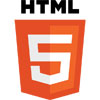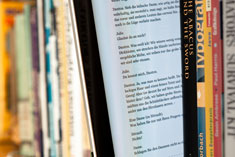Users today expect their user manuals to be available on smart phones, tablets or readers. While printed material gets tossed in the recycling bin, instructions are fetched from the net. Therefore, publications for mobile devices are not just a hype but a clear need, and not just for the younger generation either.
A manufacturer can offer his customers various document formats. The most prevalent today is the PDF. This format is often used for documents that are provided on the Internet. However, since PDF files have fixed layout specifications for text size, paragraphs or spacing, PDFs are usually suited only to a limited extent for reading devices on which an e-book reader runs.
It makes more sense to prepare an instruction manual in an established e-book format that presents the content dynamically based on the screen size. The current HTML5 format plays a role here, because the standard format for e-books is nothing else but HTML5 in a defined “packaging”.

The sign for HTML 5: Hello from Superman.
Source W3C: Wiki Commons
An e-book reader functions like a very simple web browser. This web browser does not accept time-consuming formatting that a technical writer might have created for the ...
Read more after login
tekom members can log in directly with their "My tekom" access data.
You are not yet a tekom member, but would like to read one or more articles in full? Then you have the opportunity to register on the internet portal of the technical journal 'tcworld' without obligation. Once you have registered, you can select any three specialist articles and view them in full for a period of two months. The selection will then be deleted and you can select three new articles for the next two months.
As a tekom member you benefit from the following advantages::
- Online access to all articles of the trade magazine 'tcworld magazine'
- Exclusive specialist articles from all areas of technical communication
- Regular new articles from over 300 authors
- The technical journal 'tcworld magazine' as a printed edition
- Reduced admission prices to tekom conferences
- Membership fees for tekom publications
- Access to 'my tekom', the web forum with job offers / job requests, appointments, expert advice, service provider file and much more
Login
Registration
Promised: The trade magazine 'tcworld magazine' is the best we have. And we don't make the choice easy for ourselves. Every month, the editorial staff of the technical journal 'tcworld magazine' publishes the latest articles by renowned authors. This demanding selection is available exclusively to members of tekom (as usual, including the printed edition).
The trade magazine 'tcworld magazine' stands for intelligently prepared specialist articles, texts written to the point, informative content, surprising insights, international perspectives and communicates technical communication in an understandable, fast, clear and uncomplicated way - exclusively for you.


